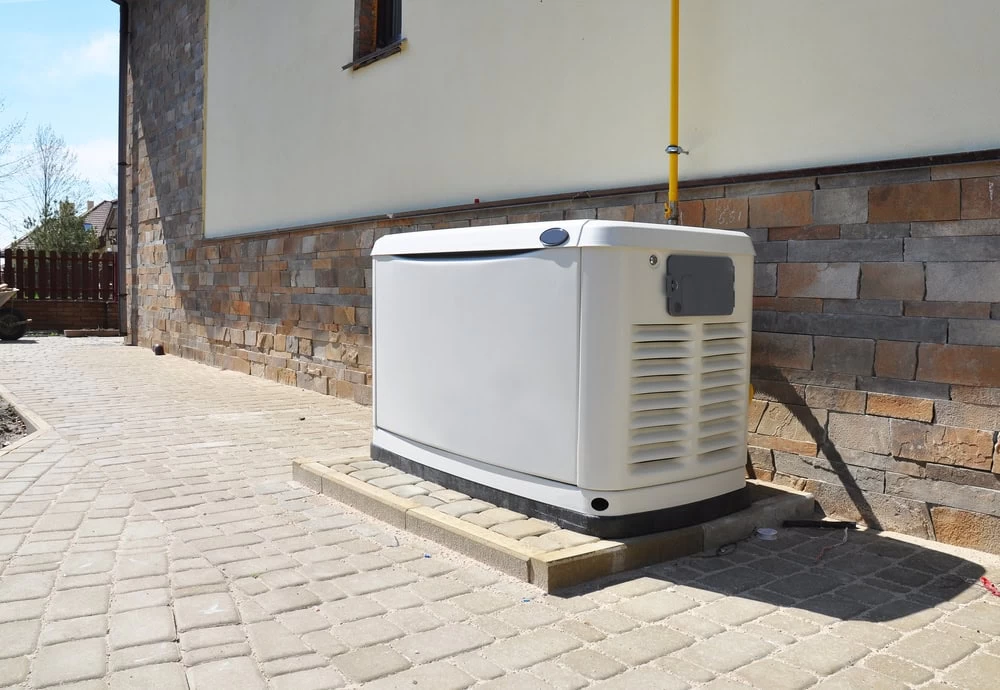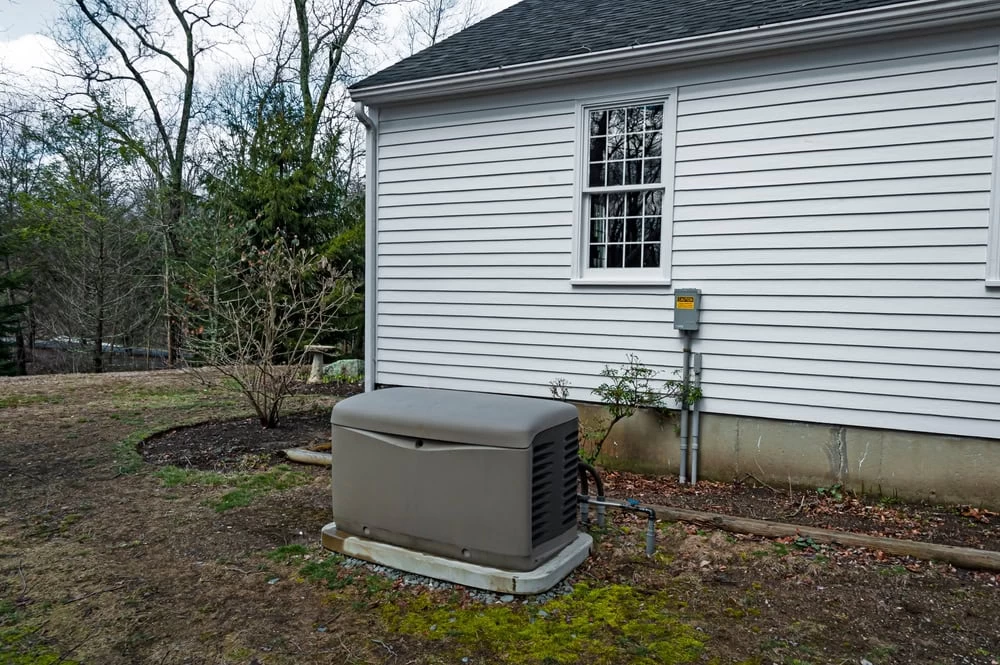Summary:
Why Generator Installation Makes Financial Sense
The math is straightforward. A refrigerator full of groceries costs $200-400 to replace after a long outage. Add spoiled medications, ruined electronics from power surges, and a few nights in a hotel, and you’re looking at thousands in losses.
Meanwhile, a whole house generator installation typically runs $13,000-20,000 in Texas. That might seem steep until you realize it pays for itself after preventing just a few major outages. Plus, you’re not just buying equipment—you’re buying certainty that your family stays safe and comfortable no matter what the weather throws at you.
What Texas Homeowners Actually Spend During Extended Outages
Let’s break down what Haskell County families really face during multi-day power outages. Your refrigerator and freezer contents? That’s easily $300-600 down the drain for a typical family. Prescription medications that require refrigeration? Another $200-500 to replace.
But the hidden costs add up fast. Hotel rooms during extended outages run $100-150 per night in the area. Eating out for every meal because you can’t cook? That’s another $150-200 daily for a family of four. Generator rentals, if you can find them during emergencies, cost $50-100 per day plus fuel.
Then there’s the appliance damage. When power surges back on after an outage, it can fry electronics, HVAC systems, and major appliances. A single surge can destroy $2,000-5,000 worth of equipment in seconds. Your homeowner’s insurance might cover some losses, but you’ll still face deductibles and the hassle of replacing everything.
Most families don’t realize how quickly these costs compound. A three-day outage can easily cost $1,500-3,000 between spoiled food, hotels, meals, and potential appliance damage. Experience two or three major outages, and you’ve already spent more than a quality standby generator installation would have cost.
How Standby Generator Installation Eliminates These Costs
A properly installed whole house generator kicks in automatically within seconds of losing grid power. Your refrigerator keeps running. Your food stays fresh. Your family stays home. The financial bleeding stops immediately.
The automatic transfer switch detects the outage and starts your generator before you even notice the lights flickered. Within 10-20 seconds, your essential systems are back online. No scrambling for flashlights, no rushing to move food to coolers, no booking emergency hotel rooms.
Your HVAC system keeps running, so your family stays comfortable regardless of the season. Security systems remain active. Medical equipment continues operating. Internet and phone service stay connected. Life continues normally while your neighbors deal with the chaos and expense of being without power.
The generator runs on natural gas or propane, so you don’t need to worry about storing gasoline or running out of fuel during extended outages. Modern standby generators can run for days or even weeks as long as they have fuel supply. They’re designed to handle Texas weather extremes and keep running when you need them most.
Quality installation also includes surge protection, so when grid power returns, your appliances and electronics are protected from dangerous voltage spikes. This alone can save thousands in equipment replacement costs over the generator’s lifetime.
Professional Generator Installation Process That Protects Your Investment
Generator installation isn’t a DIY project. It requires electrical expertise, gas line work, and local permit knowledge that only certified professionals should handle. The wrong installation can create safety hazards, void warranties, and cost more to fix than doing it right the first time.
Professional installation starts with a thorough assessment of your home’s power needs and the best location for your generator. The process involves electrical panel connections, gas line installation, concrete pad preparation, and testing to ensure everything works perfectly when you need it.
What to Expect During Professional Generator Installation
The installation process typically takes one to two days, depending on your home’s specific requirements. First, we conduct a site evaluation to determine the optimal generator placement. The unit needs to be close enough to your electrical panel and gas meter to minimize installation costs, while meeting local code requirements for clearances.
Next comes the concrete pad preparation. Your generator needs a stable, level foundation that can handle the unit’s weight and vibration. We pour a concrete slab or prepare a gravel pad according to manufacturer specifications. This foundation work is crucial for preventing future problems and ensuring your generator operates smoothly for years.
The electrical connections require installing an automatic transfer switch next to your main electrical panel. This switch monitors grid power and automatically starts your generator when needed. It also prevents dangerous back-feeding that could electrocute utility workers. Only licensed electricians should handle this critical safety component.
Gas line installation connects your generator to your home’s natural gas supply or a propane tank. This work requires proper sizing, pressure testing, and code compliance to ensure safe, reliable fuel delivery. Many installations also include a gas shut-off valve for maintenance and safety purposes.
Finally, the system undergoes comprehensive testing to simulate an actual power outage. We verify that the generator starts properly, the transfer switch operates correctly, and your selected circuits receive power as expected. We’ll also walk you through basic operation and maintenance requirements.
Choosing the Right Size Generator for Your Haskell County Home
Generator sizing determines both your upfront cost and long-term satisfaction. Too small, and you won’t have enough power for essential systems. Too large, and you’ll pay more than necessary for capacity you’ll never use. Professional assessment ensures you get exactly what you need.
Most Haskell County homes need between 16-24 kilowatts for whole house coverage. This handles your HVAC system, refrigerator, lights, security system, and most outlets. Smaller homes might get by with 10-14 kW units, while larger homes with multiple HVAC zones might need 25+ kW generators.
The key factors include your home’s square footage, electrical panel size, and which systems you consider essential. We calculate the starting and running watts for your major appliances and systems. Air conditioners and heat pumps require significant power to start up, so proper sizing accounts for these surge demands.
Some homeowners choose partial-home generators that power only essential circuits. This approach costs less upfront but requires careful planning about which outlets and systems receive backup power. You might keep the refrigerator, some lights, and heating system while sacrificing conveniences like the garage door opener or basement outlets.
Whole house generators cost more initially but eliminate the guesswork about what stays powered during outages. You can use your home normally without worrying about which circuits are covered. For most families, the extra cost provides significant peace of mind and convenience.
We also consider future needs. Planning to add an electric vehicle charger or pool equipment? It’s more cost-effective to size your generator appropriately from the start rather than upgrading later.
Making the Smart Investment in Generator Installation
The question isn’t whether you can afford generator installation—it’s whether you can afford to go without one. Between spoiled food, hotel costs, and appliance damage, major outages quickly become expensive emergencies that strain family budgets.
A professionally installed generator transforms power outages from financial disasters into minor inconveniences. Your family stays safe, comfortable, and home while avoiding the thousands in costs that come with extended outages. When you’re ready to protect your Haskell County home with reliable backup power, we bring over 20 years of electrical expertise to ensure your installation is done right the first time.




